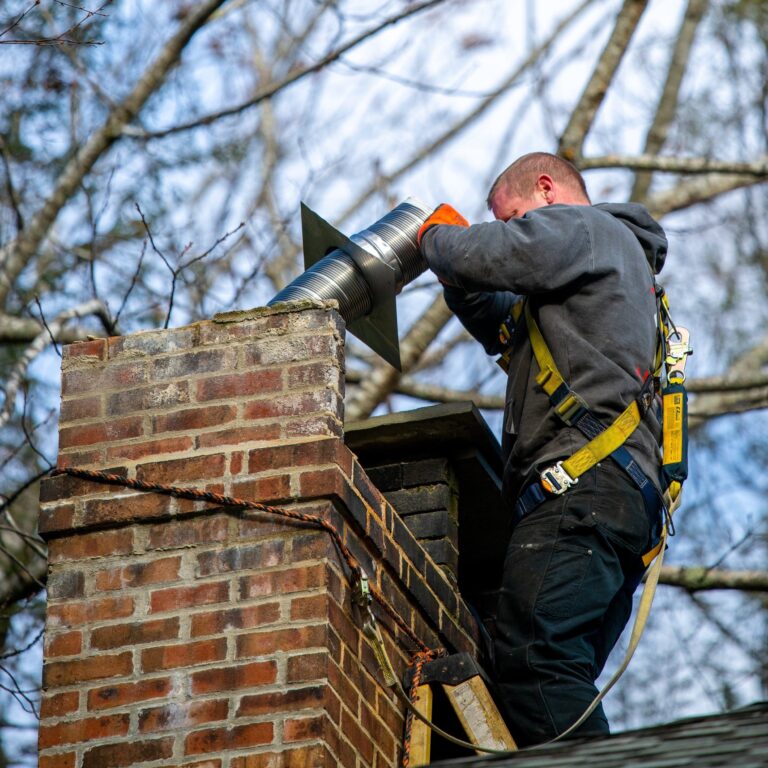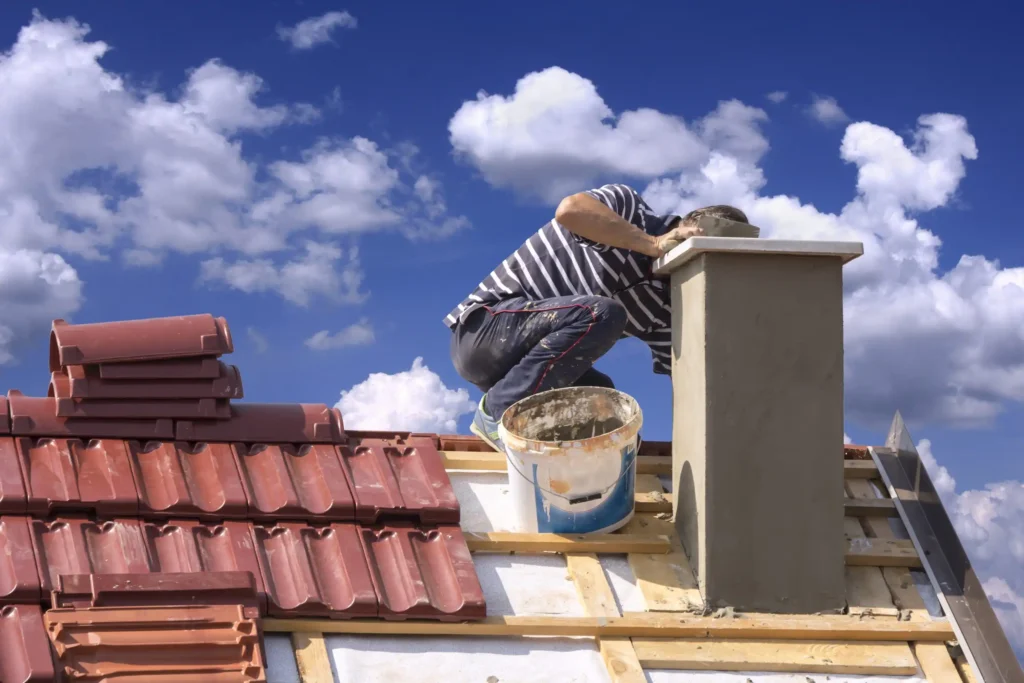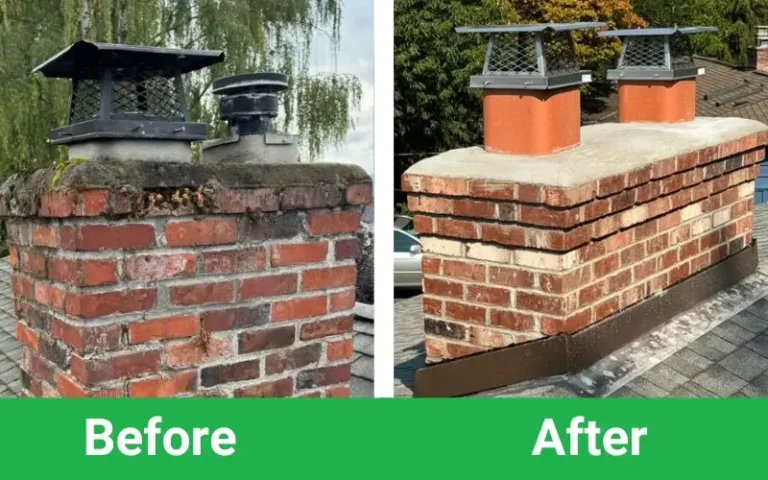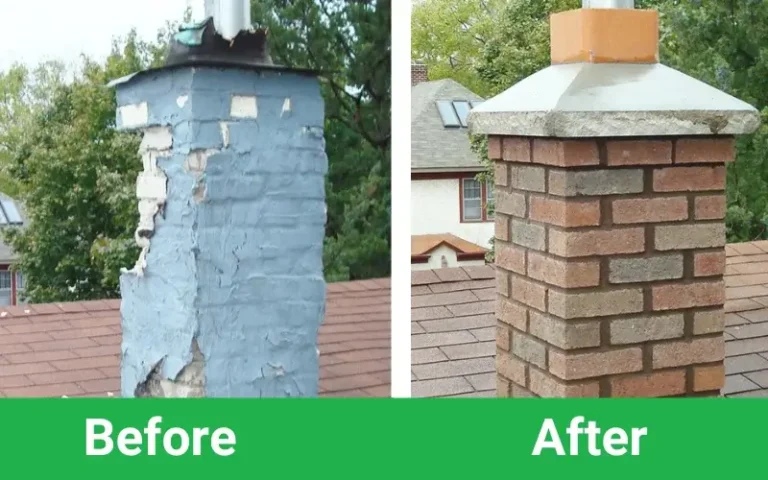Cast-in-Place Liners
Cast-in-place chimney liners are a less common but highly effective option. These liners are created by pouring a cement-like mixture down the chimney, which forms a seamless, insulated barrier inside the chimney walls. Cast-in-place liners provide excellent structural support, which makes them perfect for chimneys that have experienced significant damage or wear over the years.
The main benefit of a cast-in-place liner is that it strengthens the chimney from the inside out. It’s especially useful in chimneys that have suffered from cracks or damage due to age or severe weather. While this type of liner is more labor-intensive and can be more expensive upfront, it’s a good long-term solution for homeowners looking for durability and added insulation.
How to Choose the Right Chimney Liner in Kitsap, WA
Choosing the right chimney liner depends on several factors, including the age of your chimney, the type of fuel you burn, and Kitsap’s local climate. Here’s what you need to consider:
Factors to Consider
- Fuel Type: Different types of fuel have different effects on your chimney. Wood fires produce more creosote buildup, while oil and gas create more acidic byproducts. If you’re burning wood regularly, you’ll want a durable liner that can handle the soot and creosote, like a stainless steel chimney liner.
- Chimney Age: If you have an older home, your chimney may have a clay tile liner that could be worn out or cracked. Replacing it with a metal liner can help improve efficiency and safety.
- Local Weather: Kitsap, WA, is known for its rainy, damp climate. Choosing a liner that is resistant to moisture, like stainless steel or cast-in-place options, is critical for avoiding rust and long-term damage.
Comparing Durability, Cost, and Maintenance Requirements
Each type of liner has its own maintenance needs. Clay tile liners require more frequent inspection and repair, while stainless steel liners are easier to maintain and last longer. Cast-in-place liners provide excellent durability but might require more upfront investment. When selecting a chimney liner for your home, weigh the long-term maintenance costs against the upfront installation expenses.
Benefits of Lining or Relining Your Chimney
There are numerous advantages to lining or relining your chimney, especially if you’ve been considering chimney repair or
chimney services in Kitsap, WA.
Enhanced Safety
First and foremost, lining your chimney reduces the risk of fire hazards and gas leaks. A good chimney liner acts as a barrier, preventing heat from transferring to the walls of your home and keeping dangerous gases like carbon monoxide from seeping into your living spaces.
Better Efficiency
A well-lined chimney also improves the efficiency of your fireplace or stove. By creating a smooth surface for the smoke and gases to flow through, a good liner helps to enhance the draft, which means your fire burns hotter and more efficiently. Your fireplace or stove becoming more efficient at heating your home can lead to lower energy costs.
Chimney Liner Installation Process
When it comes to installing a chimney liner, it’s always best to leave the job to professionals. Here’s what you can expect during the process.
Professional Installation Overview
The first step in the installation process is inspecting your current chimney. This includes checking for cracks, wear, and other damage. Based on the condition of your chimney, the installer will recommend the right type of liner. For homes in Kitsap, WA, stainless steel and cast-in-place liners are often the best choices due to the wet climate. The installer will also ensure the liner fits correctly, which is vital for proper chimney function.
Importance of Inspections and Permits in Kitsap County
Before installation, it’s important to check with your local authorities in Kitsap County to see if you need any permits for the job. Additionally, regular inspections and maintenance are crucial. Inspections help catch problems early, whether it’s a crack in your chimney flashing or a worn-out chimney cap that needs replacement. These small repairs can extend the life of your liner and prevent costly brick chimney repairs in the future.
Maintenance and Care for Your Chimney Liner
Once your chimney liner is installed, regular maintenance is key to keeping it in good condition. Here’s what you need to know:
Regular Inspections
It’s a good idea to schedule a chimney sweep at least once a year to clean out creosote buildup and check for any cracks or corrosion in the liner. Regular inspections also help catch early signs of damage, allowing you to make necessary repairs before more serious issues arise.
Cleaning Recommendations
Depending on the type of chimney liner you have, your cleaning needs will vary. Clay tile liners are prone to buildup and may need more frequent cleaning, while stainless steel liners are easier to maintain. However, it’s always a good idea to follow the cleaning guidelines provided by your chimney service professional.
Conclusion
When it comes to chimney repair in Kitsap, WA, choosing the right chimney liner is essential for the safety, efficiency, and longevity of your chimney. Whether you opt for a clay tile, stainless steel, or cast-in-place liner, make sure you work with a professional to ensure proper installation and long-term maintenance.
If you’re unsure which liner is right for your chimney, reach out to
Chimneyz for expert advice and personalized recommendations. Regular inspections, cleanings, and timely repairs will help keep your chimney in top shape, no matter what type of liner you choose.
Frequently Asked Questions
What is the purpose of a chimney liner?
A chimney liner protects your home from heat transfer, ensures safe venting of smoke and gases, and prevents damage to your chimney’s structure.
How do I know if my chimney needs a new liner?
If your chimney has cracks, corrosion, or frequent issues with smoke venting, it may be time for a chimney liner replacement.
What type of chimney liner is best for Kitsap, WA?
For Kitsap’s wet climate, stainless steel chimney liners are highly recommended for their durability and resistance to corrosion.
How often should I inspect my chimney liner?
A yearly inspection and chimney sweep is recommended to keep your chimney liner in good condition.
Can I install a chimney liner myself?
It’s always best to hire a professional for chimney liner installation, as it requires precise measurements and proper fitting to ensure safety.
Are clay tile liners still used today?
Yes, clay tile liners are still found in many older homes, but they are prone to cracking and may need frequent repairs or replacement.
Do I need a chimney liner for a gas fireplace?
Yes, even gas fireplaces benefit from a chimney liner, as they still produce harmful gases that need to be vented safely.
How long do chimney liners last?
The lifespan of a chimney liner depends on the material. Clay tile liners can last 20-30 years, while stainless steel liners can last much longer with proper maintenance.







